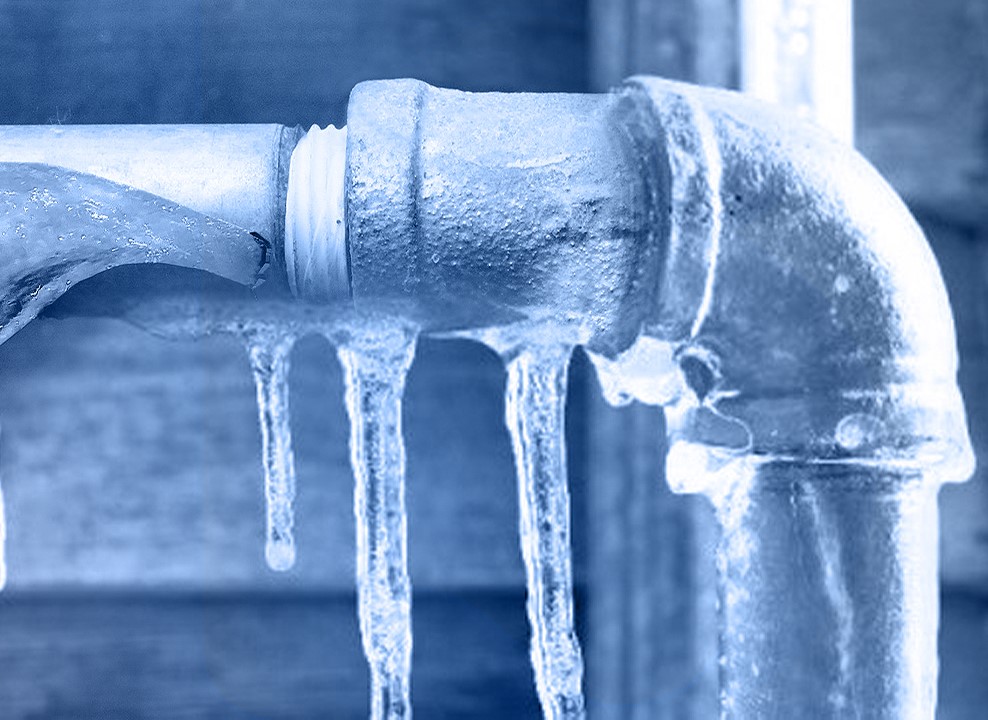Essential Tips to Avoid Frozen Pipes in Cold Weather: Professional Guidance
Essential Tips to Avoid Frozen Pipes in Cold Weather: Professional Guidance
Blog Article
This great article underneath about How to Prevent Your Pipes From Freezing is truly captivating. Check it out for your own benefit and see what you think of it.

Winter can damage your plumbing, especially by freezing pipelines. Here's exactly how to avoid it from taking place and what to do if it does.
Intro
As temperatures drop, the danger of frozen pipes increases, potentially leading to costly fixings and water damages. Understanding how to prevent icy pipes is essential for property owners in chilly climates.
Prevention Tips
Insulating at risk pipelines
Cover pipelines in insulation sleeves or utilize warmth tape to shield them from freezing temperature levels. Concentrate on pipelines in unheated or exterior locations of the home.
Heating methods
Keep indoor areas properly heated up, specifically areas with pipes. Open up cabinet doors to permit warm air to distribute around pipes under sinks.
How to identify icy pipes
Seek lowered water flow from faucets, uncommon smells or sounds from pipes, and visible frost on subjected pipelines.
Long-Term Solutions
Structural modifications
Take into consideration rerouting pipelines far from outside walls or unheated areas. Add extra insulation to attics, basements, and crawl spaces.
Upgrading insulation
Invest in premium insulation for pipelines, attics, and walls. Proper insulation helps maintain consistent temperature levels and lowers the threat of frozen pipes.
Protecting Exterior Pipes
Garden hoses and exterior taps
Detach and drain yard hose pipes prior to winter months. Mount frost-proof spigots or cover outside faucets with shielded caps.
Comprehending Icy Pipelines
What creates pipes to freeze?
Pipelines ice up when exposed to temperatures listed below 32 ° F (0 ° C) for prolonged periods. As water inside the pipes ices up, it broadens, putting pressure on the pipeline wall surfaces and potentially creating them to rupture.
Risks and problems
Icy pipes can cause water supply interruptions, home damages, and pricey repairs. Burst pipes can flood homes and cause comprehensive structural damage.
Indications of Frozen Water Lines
Recognizing icy pipes early can avoid them from rupturing.
What to Do If Your Pipes Freeze
Immediate actions to take
If you suspect icy pipelines, keep faucets open to relieve stress as the ice melts. Use a hairdryer or towels taken in warm water to thaw pipes gradually.
Verdict
Stopping frozen pipelines needs proactive actions and quick responses. By recognizing the causes, indicators, and preventive measures, homeowners can secure their pipes during winter.
5 Ways to Prevent Frozen Pipes
Drain Outdoor Faucets and Disconnect Hoses
First, close the shut-off valve that controls the flow of water in the pipe to your outdoor faucet. Then, head outside to disconnect and drain your hose and open the outdoor faucet to allow the water to completely drain out of the line. Turn off the faucet when done. Finally, head back to the shut-off valve and drain the remaining water inside the pipe into a bucket or container. Additionally, if you have a home irrigation system, you should consider hiring an expert to clear the system of water each year.
Insulate Pipes
One of the best and most cost-effective methods for preventing frozen water pipes is to wrap your pipes with insulation. This is especially important for areas in your home that aren’t exposed to heat, such as an attic. We suggest using foam sleeves, which can typically be found at your local hardware store.
Keep Heat Running at 65
Your pipes are located inside your walls, and the temperature there is much colder than the rest of the house. To prevent your pipes from freezing, The Insurance Information Institute suggests that you keep your home heated to at least 65 degrees, even when traveling. You may want to invest in smart devices that can keep an eye on the temperature in your home while you’re away.
Leave Water Dripping
Moving water — even a small trickle — can prevent ice from forming inside your pipes. When freezing temps are imminent, start a drip of water from all faucets that serve exposed pipes. Leaving a few faucets running will also help relieve pressure inside the pipes and help prevent a rupture if the water inside freezes.
Open Cupboard Doors
Warm your kitchen and bathroom pipes by opening cupboards and vanities. You should also leave your interior doors ajar to help warm air circulate evenly throughout your home.

I'm certainly very involved in How to Prevent Your Pipes From Freezing and I hope you appreciated my blog entry. So long as you liked our blog entry please make sure you remember to pass it around. I value reading our article about 6 Ways to Prevent Frozen Pipes.
Pricing Report this page